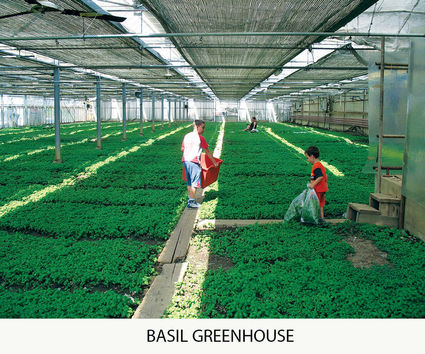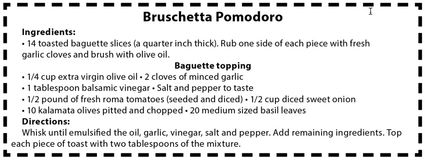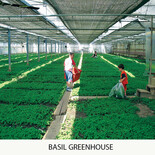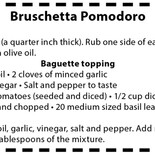Quality is paramount at basil farms in Italy
Herb snips
June 22, 2019
I wondered if it was true that basil grown in the Liguria region of Italy was the best in the world. For over 30 years I heard this from both the herb and culinary communities. I thought it might be just hearsay based on pride in a crop so much a part of the culture. The opportunity to go to Liguria and discover for myself was the fulfillment of a dream.
Researching the weather of this region it seemed that not all areas of Liguria would be suitable for year-round basil growing, as I knew it. The famous Riviera region along the coast would fit the bill with its mild climate but not the inland areas. How could 400 hectares (988.40 acres) of basil be growing in Liguria?
I was fortunate to have a knowledgeable guide to interpret and answer many of my questions. He took me to visit one of the many small commercial basil farms around Genoa where they grow this prized produce in greenhouses. A greenhouse makes it possible to control ventilation, heat, humidity and light levels. This environment protects from extreme cold in the winter and heat in the summer. These ideal growing conditions also prevent plant pathology, which can quickly devastate a whole crop. Was this the secret to growing a large quantity of basil all year long?
On this commercial farm there was very little automation. Skilled farmers who know what it takes to maintain an ongoing crop manipulate the growing grounds. It requires eight people per hectare (2.471 acres) to keep the farm up. This farmer explained that he watered every other day but made sure the ground was dry after eight hours, because basil needs good drainage to remain healthy. The ideal temperature for germination is about 65 degrees F. Basil grows well in the sun but a little shade will result in tender, aromatic plants. Keeping all these factors in balance is the challenge!
The planting and harvesting are fascinating processes and I believe hold the key to the world famous flavor of Ligurian basil. The soil is neutral and lightweight with calcium and organic material. The greenhouse is planted by hand in raised beds with " genoese" basil seed. These seeds are planted with pride because the resulting leaves have a "large bouquet" (scent) with no bitter or mint taste. Many types of basil grown in the USA do have a mint flavor which we are accustomed to.
When some of the plants have attained eight leaves and are about five inches tall the "first pass" is made. This involves hand pulling by workers sitting or lying prone on strategically placed wooden boards across the basil. These young tender plants including the roots are bundled and sold in bouquet fashion. When there are enough plants meeting the specifications there is a "second pass" to pull those. These passes continue until there are few plants left and it is time to reseed. This occurs twice a year and it is at this juncture the fields are sterilized and enriched.
I think it is attention to detail and years of basil farming experience that makes Ligurian basil the "world standard." Many of these farms were set up in the 1920s, and they know what it takes to grow superb basil on their piece of land. There is a personal and historical pride in producing the very best basil in the world!
As a long time basil enthusiast I can unequivocally say that the basil I tasted in Liguria was the best I have ever had. The "larger bouquet" was a term I heard often and it translates to taste. This Ligurian herb has a pronounced basil flavor without bitterness or minty overtones. The reason for this is their sound farming practices but picking only the "sweet young leaves" is no doubt a factor.
This column is the second in a series of four relating to basil. Contact me at http://www.herbbasket.net with your basil questions, recipes and comments. We will be exploring the King of Herbs for three more months.









